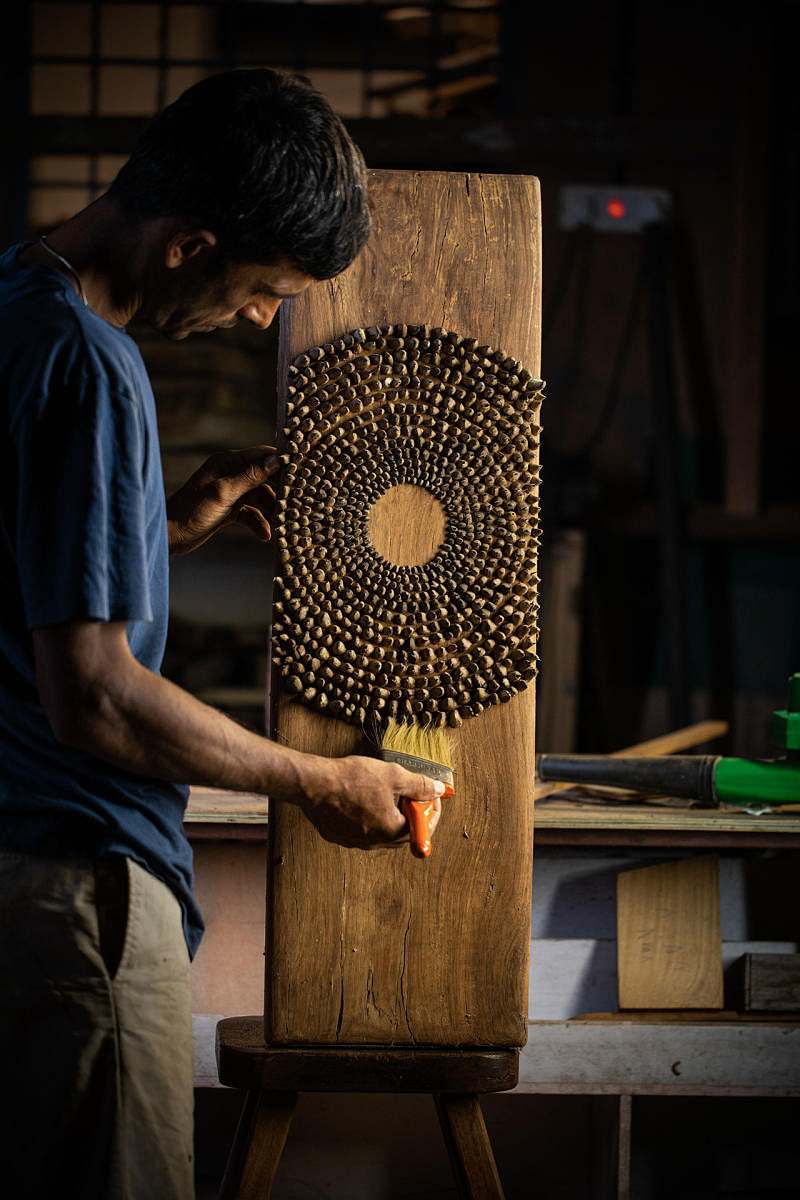
The first reaction on encountering a thorn is to pull away and keep a safe distance; this is true not just for humans, but animals too, the potential pricks serving as a confirmed deterrent for anyone who chooses to step close. But, how about turning these very same prickly elements into a piece of art that can be showcased, admired, wondered, leaving the viewer asking for more? Sounds implausible?
Perhaps not. Certainly not, after observing the stunning art created by Sandilya Theuerkauf from multiple varieties of thorns, each thorny in its manifestation, yet grouped in such a spectacular form that leaves the onlooker astounded. Having grown up in the district of Wayanad in Kerala, it is not surprising for Sandilya to display an intense interest in nature and environment.
“It is the beauty of the thorns, their unique character that caught my attention, drawing me in every time I observed them. The attention that creates the memory based on what you see, hear or touch, brings in a familiarity. It prompted me to give importance to this, an idea evolving, however abstract or difficult to articulate it may be. It permits us to relate to the spaces around us, creating awareness where it goes beyond observation to what our response could be,” elaborates Sandilya on his journey through nature, which prompted him to come up with his unique artistic rendition.
Given his interest in working with his hands and the joy of creating art, Sandilya, not surprisingly, ventured to collect the thorns that prevailed aplenty in the rocky, dry deciduous scrub forests surrounding his workplace in the outskirts of Bengaluru. According to him, there was no deliberate or pre-planned initiative to his art, but merely an effort to address what he saw and assimilated, “putting aside the judgements that invariably come by when you see as well as what you see when you actually don’t see!”
The thorns, concealed in the thickset of the branches and twigs, are laboriously snipped, collected and based on their textures, shapes and sizes, are carefully categorised by Sandilya. “The entire process from the plucking to the final evolution of the art piece is challenging as well as meditative. It is fascinating to see how they finally unfold, their dense textures exciting as well as evolving continuously with no pre-planned structure,” he states.
The craft of it all
His thorn art is mounted on wood, sourced from old discarded doors, from saw mills, even fallen logs in the forest land around his workplace. The entire exercise is a personal journey, not one involving deliberate procurement of material to execute art to meet given specifications, he points.
While each piece takes an average of four to five weeks to complete, some of his pieces take a couple of months, depending on the nature of design and art rendered.
“In one of the artworks, I used thorns plucked from a tree that was earlier submerged in water. Each segment of the tree offered a different size and shape of thorn, which I arranged in accordance. However, the tree soon submerged again and I had to wait for the water to recede to pluck the remaining required thorns. This resulted in the artwork taking two years to complete,” he smiles.
Just as the shapes of the wood piece on which he mounts the thorns differ, so do the patterns in which he arranges his thorns to create his art. While the layout is dense, the thorny expanse on the plank or log of wood can be a large mass, with merely the sizes of the thorns varying to those where the thorny patch can meander in snaky patterns or encircle a vacant patch of space or manifest as a random spikey mass.
Says Sandilya, “My art is not about thorns, but my relationship with the landscape and how you perceive and link to nature and environment. This pertains to not only me, but to humanity as people need to change their perception and care for the planet irrespective of whether they reside in an urban or rural area. These thorns, in a way, alter our perception and ensuing action.”